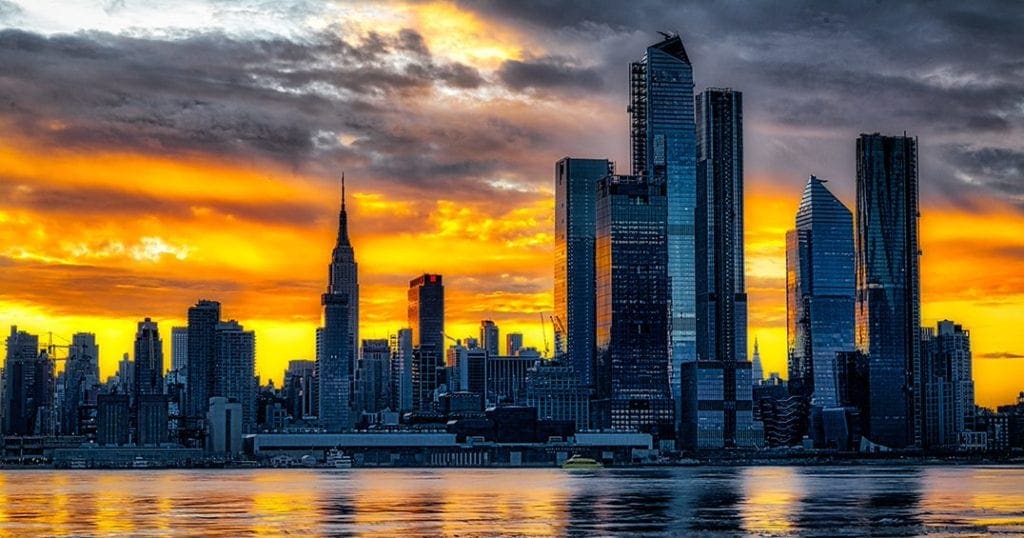Sign up below to receive the latest insights into the multifamily market from redIQ. We swear, we won't blow up your inbox.
Hudson Yards, Related, and the Future of Multifamily

History of the Site
The first proposal for the development of the West Side Yard, the site that now holds Hudson Yards, occurred in the 1950s. It called for a 1,750-foot skyscraper to rise in the then-squat industrial neighborhood. The building would have extended the burgeoning central business district of Midtown to the Hudson, but the would-be developer, William Zeckendorf, never began construction. Others also failed to build proposed projects: the Jets and the Yankees never got their planned stadium above the rails, and Albany and local activists stymied New York City’s Olympic planning committee’s similar ambitions.
This curse of abandoned projects finally ended in 2006. New York’s Metropolitan Transportation Authority, owner of the West Side Yard, put out an RFP for real estate companies interested in constructing a mixed-use development over the tracks. New York City-based Related Companies emerged as the winner from a crowded field that included giants Brookfield and Tishman Speyer. Since groundbreaking occurred in 2012, Related and dozens of contractors have worked to produce a new city within a city above the Yard, in addition to other buildings neighboring the central project. When construction ends, the development and other Related buildings will redefine western Manhattan.
Multifamily Strategy on Manhattan’s Far West Side
Hudson Yards proper includes office space, a shopping mall, restaurants, green space, and upscale residences, condominiums located in 15 Hudson Yards and 35 Hudson Yards. However, these buildings represent only part of Related’s strategy to benefit from the capped Yard. In order to capture high rents and soaring condominium sales prices, both buoyed by the increased property values courtesy of the High Line and Hudson Yards, Related has purchased and developed multiple nearby parcels, including Abington House, Hudson Residences, and One Hudson Yards.
To bring these projects to fruition requires access to capital and enormous patience. By pulling this off with relatively few hitches means that Related has redefined what is possible for multifamily developers in an urban context where land remains scarce. By adopting a long-term approach, Related will continue to benefit for decades as property values in the area continue to rise. The institutional knowledge gained by planning and executing this massive undertaking is invaluable, and they are already putting it to use. To wit: Related Midwest recently broke ground on “The 78,” a project of similar scale in Chicago that will transform a massive site near The Loop into a new residential neighborhood and technology hub.
Technology Implementation
Related’s innovation in Manhattan is not confined to logistics and finance. The city within a city contains technological innovations that make it more pleasant for visitors and residents. Sensors monitor air quality and traffic, and the green space is protected from the heat of the train yards by sophisticated combinations of soil, concrete, and massive cooling fans hidden from pedestrians. According to David Gilford, a Principal at HR&A Advisors, a consulting company focused on large-scale development projects, these innovations address problems foreign to most private real estate developers. “In creating Hudson Yards, Related has wrestled with issues that cities themselves deal with, from sustainable energy infrastructure to creating a place where people want to spend time.” Guaranteeing cleanliness and providing shopping, dining, and outdoor experiences go a long way toward blending the development into the existing fabric of New York.
These technology-enabled enhancements do not stop at the street level. For condominium owners in Hudson Yards and renters in Related’s adjacent buildings, built-in smart appliances and access to concierge services have elevated what tenants can expect from their residence and property manager. Through Life Simplified, a collaborative effort between Related and startup Hello Alfred, tenants have ready access to a suite of services. Grocery delivery, laundry pickup, cleaning, move-in coordination, and even interior decoration help are all available through the app without the introduction of new spaces to these buildings or the hiring of new employees.
Lessons from Related
For multifamily owners with existing housing stock, services like Hello Alfred can help offer a technology-driven increase in quality of life that appeals to increasingly important millennials and older tenants alike. A collaborative effort between landlord and a service provider does not mean instant smart homes, but according to David Gilford, “a software-based approach can introduce new amenities without the overhead of costly modifications to an existing building.” Going forward, a value-add strategy in suburban and urban contexts might mean more than the addition of new bathrooms and counter tops, but also the introduction of an in-house app offering additional amenities for tenants—and revenue for owners.
Thanks to Related, other institutional developers have begun to see cities differently and dream bigger when it comes to their investments. New urban infill projects like Quayside in Toronto, Schuylkill Yards in Philadelphia, and Lincoln Yards in Chicago, have all taken their technological cues and ambitions from Hudson Yards. Related’s success with a unique approach—placing housing in a mixed use context on an overlooked plot of land—will hopefully become ubiquitous going forward. Employing their strategy means dividends for investors as millennials continue to flock to cities and more homes in constrained markets as affordable housing remains scarce across the country. Hudson Yards may have only opened in March, but its influence is already profound. The development approach is beginning to trickle down from secondary markets to tertiary ones, with the strong proposal for a site in Minneapolis. Going forward, more cities at home and abroad will likely use it as the model for infill development.
